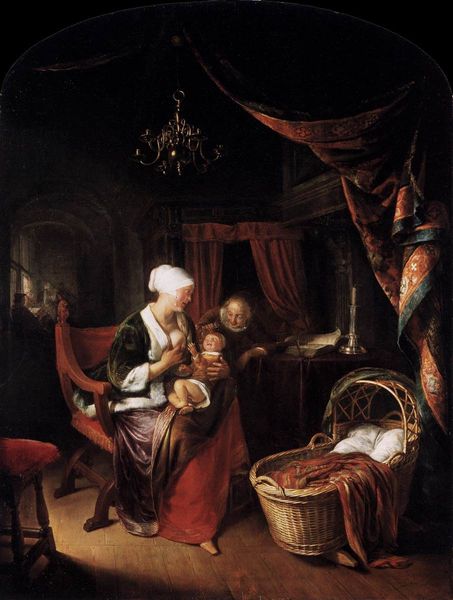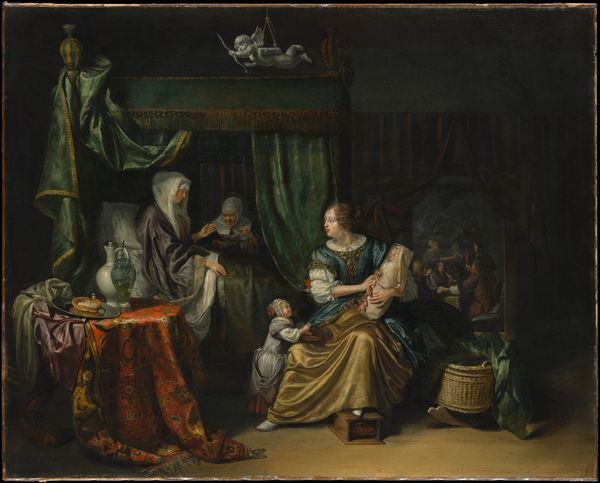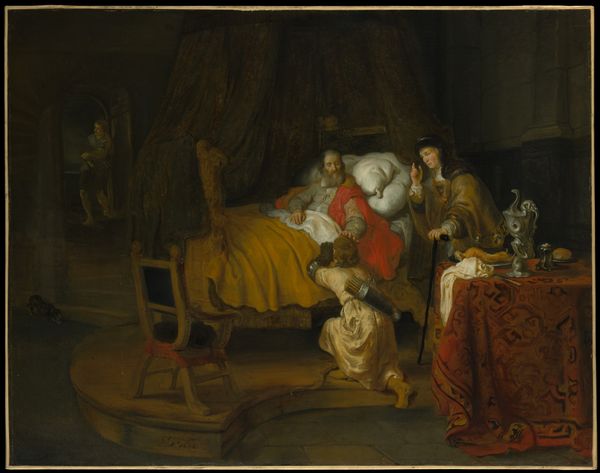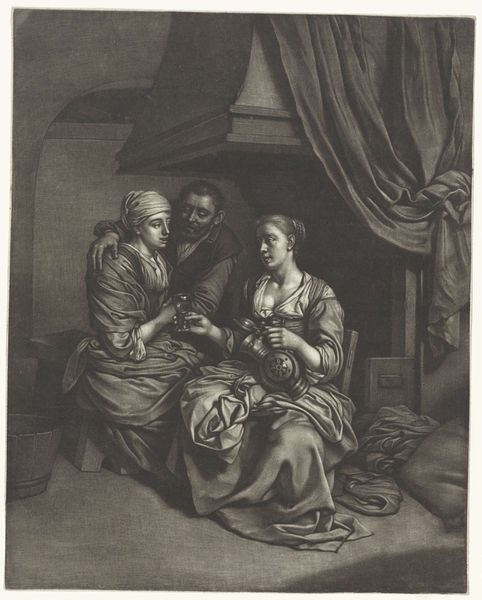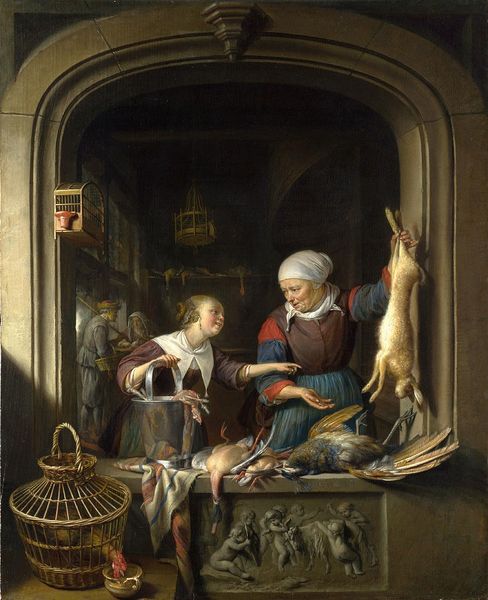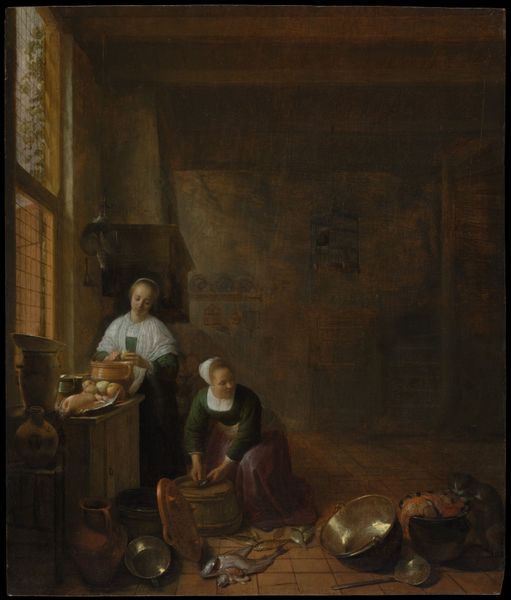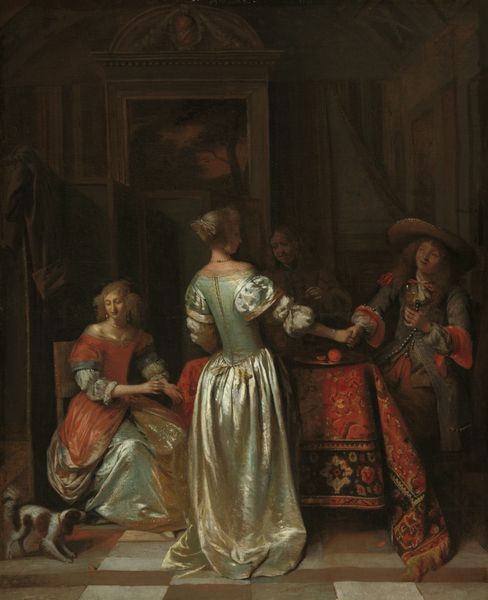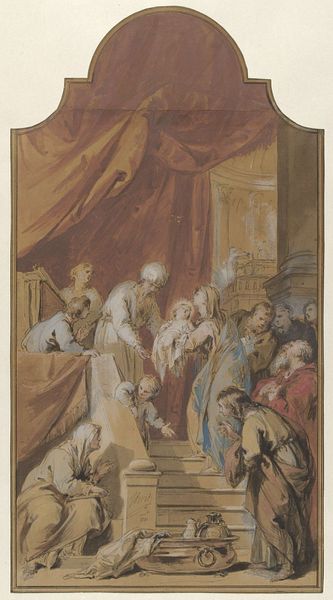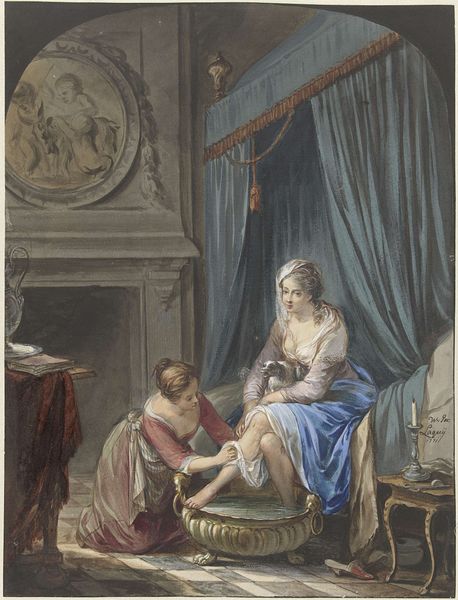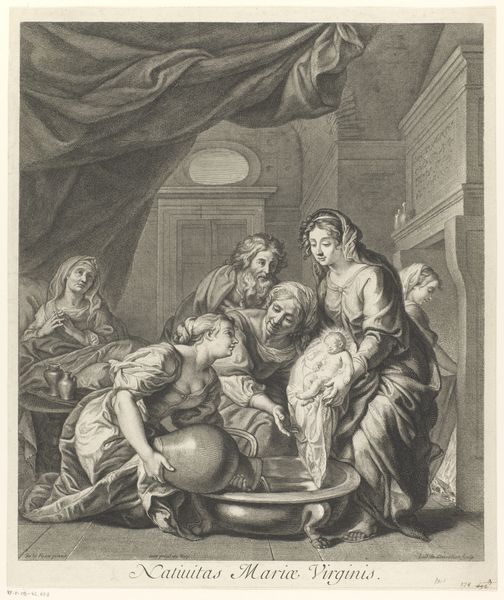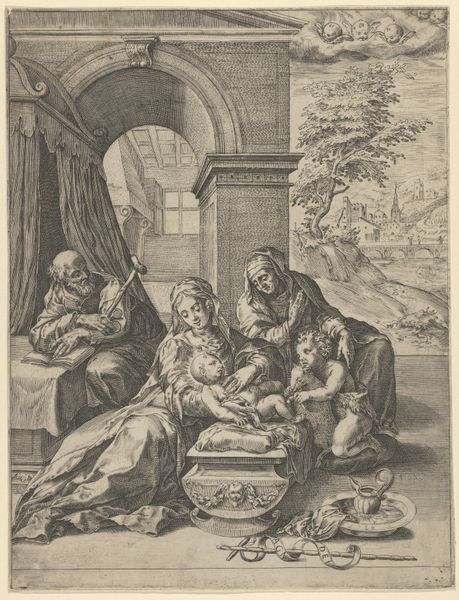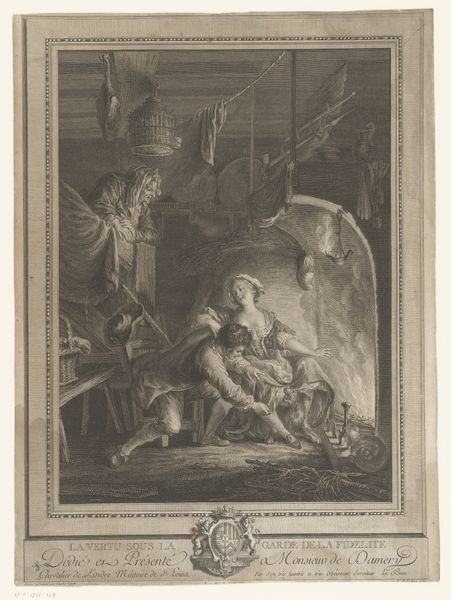
painting, oil-paint
#
portrait
#
baroque
#
dutch-golden-age
#
painting
#
oil-paint
#
figuration
#
oil painting
#
genre-painting
#
nude
Dimensions: height 49.5 cm, width 37.5 cm, depth 8 cm
Copyright: Rijks Museum: Open Domain
Curator: Domenicus van Tol's oil painting, "A Mother giving her Child the Breast," likely completed between 1660 and 1676, presents an intimate domestic scene. It seems to encapsulate the ethos of its time. Editor: My immediate reaction is one of warmth, despite the darker tones. There's something fundamentally nurturing about the composition. The light seems to cradle the figures, highlighting the tenderness of the act. Curator: Indeed. Genre paintings like this were gaining popularity, celebrating everyday life. Van Tol, a Dutch Golden Age artist, taps into this vein, depicting not a mythological scene or a grand historical moment, but a private moment of motherhood. The setting suggests a degree of affluence; note the draped fabrics, the chandelier... Editor: The chandelier! Yes, pointing towards status. But the cradle is visually prominent, too, perhaps functioning as a subtle memento mori – a reminder of life's fragility, even amidst comfort. Also, the presence of an older woman in the background observing suggests generations, a lineage. Does this allude to a common social phenomenon, as well? Curator: That's a perceptive observation. The older woman, likely a grandmother or nursemaid, embodies societal expectations. This artwork may echo and perpetuate traditional gender roles and the importance of lineage in Dutch society at the time, and it shows the family dynamic. Van Tol's choice to depict this dynamic within the setting of upper-class domesticity shows an important level of context. Editor: The act of breastfeeding itself is loaded with symbolism, fertility, nurture, sustenance. But given the period, might it also be hinting at the social imperative of producing heirs, continuing family lines? The visual language seems to intertwine personal intimacy and public duty. The nude breast in and of itself holds religious undertones, harkening to older imageries of "nursing Madonna". Curator: Precisely. Consider how art institutions have historically presented these works: often valorizing domesticity and subtly reinforcing prevailing social structures. However, contemporary views may see a woman not just bound by her social role, but acting autonomously and intimately. This work, therefore, becomes an important artefact of material culture. Editor: Looking at the historical perspective, it does spark such reflections. These everyday scenes gain added layers over the centuries, transforming from domestic depictions to cultural records. This is where we locate new dialogues that help explore historical change, allowing images of motherhood, so prominent then, to morph across history.
Comments
No comments
Be the first to comment and join the conversation on the ultimate creative platform.
